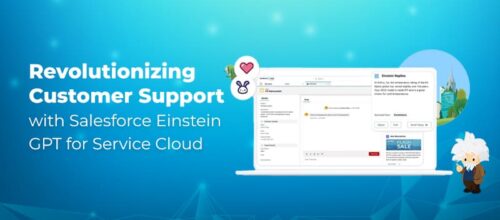The Essential Guide to Replenishment Emails: Importance and Adobe Campaign Setup
Sriparna Ghosh
Technical Lead – AdobeJuly 12, 2024
Ready to Transform Your Customer Retention Strategy?
What are Replenishment Emails?

- Time-based Triggers: These campaigns are for products with a predictable replenishment cycle, such as monthly or bi-monthly subscriptions.
- Behavioral-based Triggers: These campaigns are for previously purchased products or using the browsing history by a customer, indicating the need for certain items.
- Inventory-based Triggers: The campaigns are for customers’ previous purchases and are based on the amount they bought or based on the recurrence of their use.

- Product Information: Details about the product that needs replenishing, including the name, image, and a brief description.
- Call-To-Action (CTA): An attractive CTA button encourages customers to repurchase the product with a button click.
- Offers/Discounts: Discounts, free shipping, and other personalized offers encouraging the customers to make the purchase.
- Personalization: Including the details of the customer’s last or latest purchase to make the email more engaging.
- Timing: Ensuring the email was sent at the right time is crucial to engaging the customer when they will most likely need to replenish the products.

What is the Need for Replenishment Emails?
Data suggests that replenishment emails on Adobe Campaign have an average open rate of 50-60%, with an average click rate of 40-50%. Using replenishment emails on Adobe Campaign is a tool for businesses to generate repeated revenue. They act as a beneficiary medium for businesses to remind customers to reorder products and serve various purposes, which include:
Customer Convenience
Customers appreciate reminders about products they frequently buy, such as food items, pet supplies, toiletries, etc. It saves them the time and hassle of remembering to reorder such products.
Customer Retention
Communication through replenishment emails acts as a regular reminder to customers to remember the brand. Upon receiving timely reminders about reordering products, customers will likely remain loyal to the brand.
Data Analytics
Replenishment emails also provide relevant data insights into customer behaviors and purchasing patterns. They enable businesses to refine their marketing automation Adobe strategies and provide personalized offers by analyzing customer responses to these emails.
Overall, replenishment emails on Adobe Campaign mutually benefit both, the businesses and customers, enhancing comfort, increasing sales, and promoting long-term relationships.
Ensuring the Effectiveness of Replenishment Emails on Adobe Campaign
- Historical Purchase Data: Users can collect and analyze historical data of customer purchases, including the frequency, quantity, and timing of orders. This data can then be used to predict consumers’ future buying behaviors.
- Machine Learning Algorithms: Machine learning algorithms can be applied to the historical data to identify the consumers’ patterns and trends. Based on their past purchasing behaviors, these algorithms can predict when a customer will likely run out of a product.
- Predictive Models: The algorithms also help to build predictive models that forecast when a customer will need to replenish a product. These models consider factors such as continuity, usage patterns, and other relevant variables.
- Improvement: As new data becomes available, predictive models can be refined and updated to improve accuracy. Analyzing the effectiveness of replenishment emails helps to adjust business strategies, allowing organizations to optimize their campaigns for maximum results.
Building Replenishment Journey in Adobe Campaign Standard
- Specify Triggers: Defining the triggers that will begin the replenishment journey on Adobe Campaign. These triggers can be created on time intervals, specific dates, or customer behaviors such as when a product is running low.
- Segmentation: Segmenting customers based on purchasing history, frequency, or certain product preferences on Adobe Campaign.
- Designing Email Templates: Creating engaging email templates, which can be used throughout the replenishment journey on Adobe Campaign. These templates can include personalized product recommendations such as Last Purchased Products, Best Selling Products, reminders of the product benefits, and enticing offers for repurchasing.
- Set Up Workflow: Using Adobe Campaign Standard’s workflow editor to set up the replenishment journey. Configure the workflow to trigger emails based on the defined triggers and segmentations.
- Automation: Activating the workflow to automate the replenishment journey on Adobe Campaign. Once the campaign is activated, replenishment emails are automatically sent to customers based on the defined triggers and segmentations.
- Monitoring and Optimization: Monitoring metrics such as open rates, click-through rates, conversion rates, and revenue generated from the replenishment journey. Using this data on Adobe Campaign to optimize the journey, adjusting the triggers, segmentation, email content, and timing as needed.
- Integration with Other Channels: To create a multi-channel customer experience, consider integrating the replenishment journey in Adobe Campaign Standard with other marketing channels such as SMS, push notifications, or direct mail.
Below is an example of a Pet Product Replenishment journey in Adobe Campaign Standard:

Conclusion
Replenishment emails help businesses gain insights into customers’ buying patterns and preferences by analyzing the data gathered for accurate demand forecasting and inventory planning. Having a good replenishment strategy helps to set any business apart by offering reliable and consistent product availability. With business growth, a structured replenishment journey allows organizations to scale operations efficiently and meet increased demand without sacrificing service quality. Using Adobe Campaign Standard, Royal Cyber can help you execute this strategy so your business can thrive.
Author
Poonam ChandersyRecent Posts
- How Composability and AI are Reshaping the Business Landscape December 17, 2024
- Unlocking the Power of Data: Leveraging ServiceNow for Efficient Data Extraction December 16, 2024
- Transforming Business Processes with ServiceNow’s Flow Designer December 16, 2024
- Royal Cyber’s Salesforce CRM Accelerator for Adobe Commerce: Powering Unified Customer Experiences December 11, 2024
Recent Blogs
- Learn to write effective test cases. Master best practices, templates, and tips to enhance software …Read More »
- In today’s fast-paced digital landscape, seamless data integration is crucial for businessRead More »
- Harness the power of AI with Salesforce Einstein GPT for Service Cloud. Unlock innovative ways …Read More »



